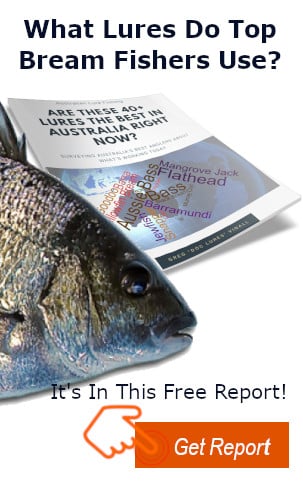

Steve Steer
Tournament Angler And Tackle Industry Identity
Steve is well known and respected on the bream tournament scene with plenty of good results and podium appearances under his belt. He’s also the founder of Australian tackle company Cranka Lures, which produces excellent lures for many Australian species, but is particularly well known for bringing some deadly bream lures to the Aussie marketplace.
Steve’s Top Bream Fishing Tips
- Big black bream in Northern Tasmania are particularly your approach. Stealth and timing your approach to the tides and structure is critical. You only get one shot at a big bream so you have to present your lure correctly first time – don’t rush your approach and avoid getting too close.
- During September and October northern Tasmania can experience the perfect combination of warming water and rainfall that sends the larger bream specimens upriver in search of the perfect salinity for spawning. Typically when this happens they’ll congregate in the mid to upper parts of an estuary. Bigger females tend to be further upstream and smaller males are often lower in the system.
- Look for areas where the water depth goes from deep water with fairly stable temps to shallow water with more variable water temperatures and start your fishing on the edges in those locations, moving to deeper water as you explore the area.
- If there is a lot of fresh water in the system the fish will often stay deep in the saltier water below. If there’s a salt wedge pushing up with the tide bream can spill out onto the shallower areas with the incoming tide.
- Rocky corners with flow or bottlenecks where currents and bait are focussed are locations for better than average bream. Look for places where the current brings food to fish that are in structure.
- When there is a salt wedge effect, look for a horizontal line on your sounder that demarks the salt water below from the freshwater above. Bream will usually feed where the bottom of this this line intersects with the riverbed or pieces of structure. For example, if the salt wedge is 3 m below the surface, fish will often be feeding in 3 to 3.5m of water.
- Bream can be caught on any tide and weather, but Steve prefers the runout tide, especially for big bream, which are usually the last fish to leave a feeding zone as the tide recedes. Know where the fish feed and where they retreat to as tide runs out.
- When fish are shy and fussy go natural, fish meticulously with sharp hooks, slow everything down and fish lures as naturally as you can. Reassess and think about what you could be doing wrong.
Steve’s Bream Fishing Tackle
- Either a 1-3 or 2-4, fast action spin rod with a light tip but plenty of stiffness in the mid-section and butt. Steve finds that 6’10” to 7’3” rods with this action give longer casting with light lures, which can be critical when targeting bream in shallow, clear water. A 3lb straight through fluorocarbon line is Steve’s preference, and he loads it on a quality spin reel. Steve reckons it’s worth spending as much as you can afford on a spin reel because the top shelf models lay the line better for longer casting and cause less wind knots.
Steve’s Bream Fishing Lures For N Tasmania
- A 65mm Cranka Crab is a versatile lure that can be fished in inches of water to very deep water and is Steve’s go-to for pretty much all Tassie estuaries. During the late spring and summer Steve will use this lure when he’s trying to get big bream to commit and when his experience indicates they might reject other lure styles. It’s great when polaroiding hard to tempt fish, which is one of Steve’s specialties.
- A suspending minnow in baitfish profile and natural colours is an important inclusion in the Tasmanian lure fishers kit, especially in shallow, clear water. Cranka lures produce a 59mm option but there are plenty of others on the market too. Lures that have subtle, natural movements are less likely to spook the larger bream, when worked intelligently and when paused in front of a fish. This lure is cast long and is given a couple of twitches once it hits the water just to get it beneath the surface. Steve then lets it sit for a count of ten or so before working the lure. The key with big black bream is to work your lure very slowly with a gentle draw and pause motion, avoid sharp jerks and ensure the lure is not moving during the pause. Mix up the number of draws between pauses and the duration of a pause. Slow, smooth and subtle.
- A 35-42mm Crankbait is Steve’s third choice. He prefers a suspending crankbait and will often weight a floating crankbait so that it suspends. This Steve’s searching lure for a system he’s not familiar with. They can be cast a long way and can be fished faster. This lure is best when you find aggressive, feeding fish. Once fish are found it can pay to switch over to the suspending minnow.
Cranka Lures
Steve’s Cranka Lures business is iconic in the tackle industry and stems from his lure making and tackle tinkering obsession that started at age 12. Cranka now produce a wide range of lures for a wide range of Aussie species, with many models recognised as essential items in the bream fishers kit.


0 Comments